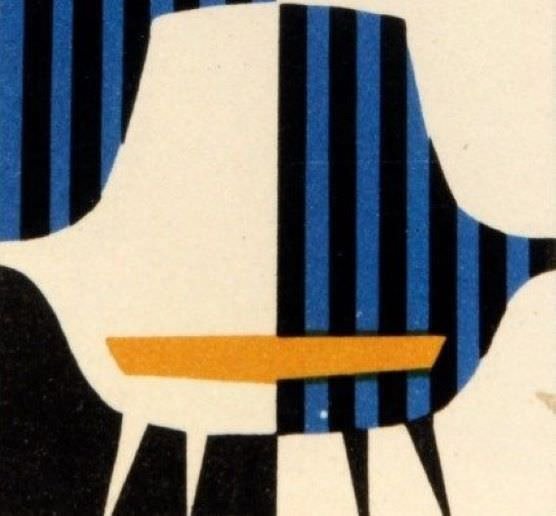In the history of Czechoslovak interior design, the phenomenon of the UP závody (UP plants) or Spojené uměleckoprůmyslové závody (United Arts and Crafts Factory) cannot be overlooked. The UP závody were among the largest furniture manufacturers in Europe.
The UP závody had a significant influence on the nature of interior design with its growing importance at the beginning of the 1920s.
The company has its beginnings in 1918s. Jan Vaněk was the founder, Vladimír Mareček took over later and started the creation of simple, purposeful and practical furniture and its promotion after Vaňek.
In 1930, Jindřich Halabala, later director and chief designer, joined the management of the company.
The company draw from the aesthetics and functionality of the design of the interwar period.
While Biedermeier and Art Deco styles were still popular just after the First World War, architects and theorists were already beginning to call for change. In addition, the housing crisis required a solution for smaller apartments and cheaper equipment, and the solution was found in the functional design.
Practical, functional, comfortable, hygienic, storable and machine-made furniture became the ideal. The inspiration was led by Vienna’s Adolf Loos, the German Bauhaus and Werkbund, Corbusier’s architectural purism in France, Holland with the Neoplasticism of the De Stijl group, and Russia constructivism.
In the first half of the twenties, after the arrival of Jan Vaňek, the UP závody factories produced mainly historical furniture. But Jan Vaněk ranked the demand for purposeful, hygienic interior and functional equipment without decorations among the most urgent housing needs. He therefore advocated the standardized production of typical products that would differ only in details. After the UP factories introduced and expanded the industrial production of furniture, they irreversibly changed the shape of Czechoslovak housing culture and public interiors.
This practical format gained popularity with the public very soon. This was due to easy and comprehensible combinability, the possibility of simple changes and additions, trouble-free maintenance and, of course, an affordable price. According to Vaňek’s predictions and wishes, the production of typical furniture has overtaken the production by order.
After Vaňek’s departure, Vladimír Mareček took over the management of the United UP factories and gradually the company moved to the production of standard furniture with smooth shapes. Mass production was started in 1927 with the order of cabinets for BUT in Brno.
Jindřich Halabala became the chief designer in 1930 and during his tenure, together with Vladimír Mareček, he shifted both the form of the products and the level of their promotion. They represented the furniture set in the interior, including accessories such as carpets, chandeliers, glasses and other accessories. They gradually added more factories, sawmills and forests all around enabling the company to become less dependent on suppliers and expanded its offer to include the production of parquet floors, doors and door frames. UP závody could thus implement complex housing orders.
Assembly furniture was one of the novelties brought by the UP závody. The model for the first series of cabinets, which were easily combined with each other, were a narrow cabinet on a plinth and a secretary on legs, designed by Jan Vaňek. Tables, sofas, seating, additional and kitchen furniture were also produced, the most successful model of which was the popular kitchen sideboard called Universa. Some of the older types, such as the Model sofa or the “Morris” chair with height-adjustable backrest, remained in production for years.
